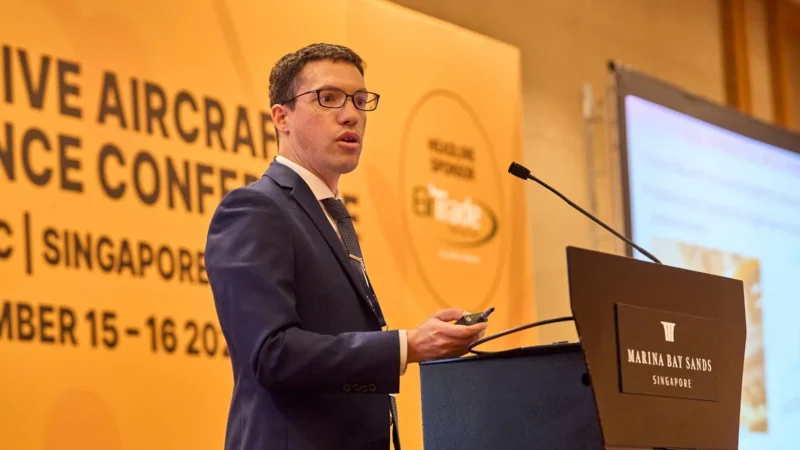Artificial intelligence (AI), lifecycle component management and cutting-edge inspection tools are combining to bring “revolutionary gains” to aircraft maintenance.
Nicolas Detalle, principal research fellow and project lead at the Aviation Services Research Centre (ASRC), told the first APAC edition of MRO Management’s Predictive Aircraft Maintenance (PAM) Conference that its work will change the entire mindset of the industry.
The ASRC was founded by Boeing and Hong Kong Polytechnic University and aims to “bridge the gap” between academic research and industrial knowledge to develop world-leading solutions for commercial aviation.
Detalle said: “The problem we are facing here [in APAC] is the same as for everyone in the industry. We want to find the defects faster, understand the degradation better, and all this while controlling costs.
“We’re not just changing the way we are doing things, it’s a shift of the philosophy. Integration of the different technologies we’re developing don’t just offer incremental improvements, but truly revolutionary gains.”
Detalle set out three key projects the centre is working on which, together, he believes will transform the way airlines manage their operations. The first is next-gen ‘super-vision’ inspection drones that use hyperspectral imaging to detect degradation and damage the human eye is incapable of seeing.
“Visual inspections are really time consuming,” said Detalle. “Plus, it’s subjective depending on the experience of the operators, and it also requires a very significant run time, man hours and equipment.”
The data collected from the drone is used to create a ‘live’ 3D digital twin of the aircraft which is available to any engineer with a device and internet connection. “This is line maintenance revolutionised,” said Detalle. “It’s live real time condition monitoring from anywhere.”
The second area the ASRC is focussing on is making data collected by the inspection more meaningful.
Fourier Transform Infrared Spectroscopy (FTIR) analyses the chemical structure of the surface of the aircraft to provide insights into the process of degradation of coatings to allow a prediction of when maintenance will be required.
The “final piece of the puzzle” is applying AI and machine learning to “move from describing the past to predicting the future”, said Detalle.
ASRC is deploying Long Short-Term Memory (LSTM) models that will allow engineers to look into the future with much more accuracy and make preventive judgements.
Detalle said: “We are not there right now in our research. But we are making steps towards this. It will mean you can forecast precise needs [and]…reduce unplanned downtime very effectively.
“If you know that, you would be able to plan for your workshops. You can plan your technicians. You can plan what you need in terms of tooling, gantry, when you need access to the aircraft, how long the aircraft will be parked for maintenance etc. It turns the data into actionable intelligence and uncertainty into foreseeable plans.”
Summarising the scope of the work the ASRC is doing, Detalle said: “We get hyperspectral drones which can fly around the aircraft and gather data on surface defects. And this gives us deeper eyes.
“Then we have a digital twin, which gives us a unified memory and AI finally gives us a predictive brain, something we can really work with.
“This is not just a series of isolated tools, it’s a complete series of new technology which fully integrate together to create a new ecosystem.
“Each component supports the next, and this is creating a closed loop for the entire aircraft health management that will be smarter, faster and more reliable. And this is much better than anything we’ve seen before in the industry.
“It’s more than just innovation, it’s a fully new philosophy for managing the health of our customers, the airlines, and those very, very expensive assets – their aircraft.”
READ MORE NEWS: ANA confirms its commitment to furthering the use of predictive maintenance
